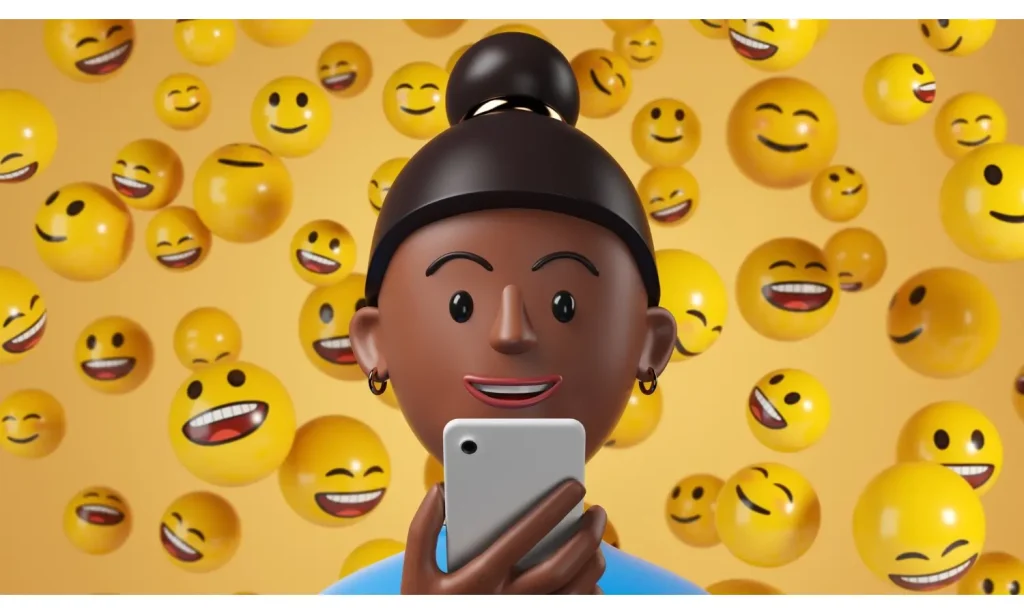Social media today serves beyond casual interactions, evolving into key platforms for networking and advancing professional careers. Millions of people every day use these tools not only for looking up old friends but at the same time creating professional bridges, forming new paths in their respective jobs, and also opening up their educational framework. As the web of global connectivity tightens, the importance of each connection request—each potential link in an ever-expanding network—grows exponentially.
Now, with the changes in the digital interaction landscape, all rules of social media etiquette have become more complex. Crafting a connection request now requires a nuanced understanding of professional decorum, personal touch, and platform-specific norms. Navigating this space demands a careful balance between the technical aspects of making requests and the nuanced skill of creating meaningful connections. This dual challenge really does highlight the necessity for a deep dive into the art of the connection request—where strategy meets sincerity.
Understanding Connection Requests
A connection request on social media is essentially an invitation to enter one’s personal or professional circle. A connection request is like extending a digital handshake, an initial step towards building a relationship. It is the opposite of following or subscribing, representing a higher level of involvement and mutual visibility; therefore, it is an even more important gesture that can unlock the gate for meaningful interactions.
In professional contexts, such requests may underpin the very initial stage of networking, career opportunities, and knowledge exchange. They can lead to collaborations, mentorships, and insights into industry trends, amplifying one’s professional presence and impact. Socially, friends help maintain and strengthen personal bonds. They keep one updated on important life events and promote community building even from a distance.
However, the significance of connection requests transcends their immediate effects. Effective management of these requests, including selecting connections and fostering these relationships, significantly influences one’s professional image online. It, therefore, underscores the need to understand how to navigate this space for both personal gains and maintaining integrity in the professions, relevance to society in an age where more interactions are run by digits.

The ‘Art’ of Making a Connection Request Effectively
Articulating a social media connection request is both an art and part strategy. It is all about tact, personalization, and a clear understanding of not just your goals but, by extension, the interests of the person you are reaching out to with the request. Here is a guide to requesting in ways that are likely to get accepted and foster productive back-and-forths.
Step 1: Research the Recipient
Before you even start typing your request, take time to research the person you are trying to connect with. Peruse his profile, read the recent posts that he has written, and try to put together his area of interests, professional background, and role in his industry. This preliminary research will surely enable you to tailor the message and, at the same time, appear genuinely interested in the connection.
Step 2: Personalize Your Greeting
Make it personal: Start with a warm greeting. Use their name and try to reference one of the details you have learned from your internet research. For example, it can be an achievement that the person has recently shared, or it can be a common connection when present. This shows you do not send a generic request and are interested in them as a person.
Step 3: Clearly Introduce Yourself
It should start with a brief and clear introduction of who you are, your professional position, and any relevant affiliations or experiences that the recipient can resonate with. This helps to set a professional context of the kind that might be useful for the recipient in connection with yourself and gives him a reason to consider your request.
Step 4: Express Intent Clearly
Be transparent with them about the reason you want to connect. It could be sharing industry insight, growing your network, or discussing a potential collaboration. State your intention clearly enough for the receiver to know how they will benefit from the connection. Vague statements, which tend to shroud your ideas, are the worst in this relation. Concrete intentions should even give way to an appearance in which acceptance seems much brighter.
Step 5: Keep It Human
If detail is key to sending a professional connection request, keep it short. Respect their time: Go directly and quickly to the point at hand. A connection request is neither an introduction nor a proposal; it’s an opening to start a conversation that may develop.
Step 6: Include a Warm Closing
End your request with a courteous closing statement. Express gratitude for the recipient’s consideration and extend a warm wish for their continued success, whether or not they actually grant your request. This lays a positive impression and leaves the door open for future interactions.
Step 7: Follow Up If Accepted
If the said connection request is accepted, follow it up with a thank you message. This doesn’t only mean good manners but also fortifies your interest to be in the said network. Such an initial follow-up can then lead into more detailed conversations as and when appropriate. You create a connection request that is personalized, shows respect, and is clear. Personalization, clarity of intent, and professional courtesy are the key components to shape your requests, opening not only the hearts of the people around you but also the doors for valuable professional and personal relationships in this digital age.
Accepting and Declining Connection Requests

Making your way through tens or hundreds of connection requests pouring in on social media and choosing who to say yes to and even how to gracefully say no is perhaps an important exercise.
Here are some guidelines and tips to best make these decisions:
Requests to Accept:
- Review the Profile: Deciding which requests to accept is very important. Always start with a review of the profile of the candidate. Pay attention to its completion, professionalism, the presence of mutual friends or identification of professional interests or industries. Usually, the existence of well-rounded profiles means that the activity on social media is real.
- Assess Mutual Benefit: Take into consideration whether this is a relationship of mutual benefit to each party. Are there actually opportunities that exist for collaboration, sharing of information, or networking from this connection? If the answer is yes, that is likely a connection worth making.
- Check for Authenticity: Look out for shallow or seemingly synthetic profiles. Few connections, very low activity, or general information could be indicative of fake accounts.
- Listen to Your Instinct: Sometimes it is by instinct that it will just feel like the right connection based on your professional instinct. If someone’s contributions to discussions and posts feel valuable to you, consider adding them to your network.
Politely Declining Requests
- Be Direct and Kind: If you refuse a request, do so directly but kindly. You may have to ignore a request altogether, but sometimes a polite message saying why you cannot fulfill it can help maintain professionalism. If you want, say something like, “Thank you for reaching out. At the moment, I’m narrowing my focus to several areas and prefer not to expand my network on a larger scale.”
- Utilize Platform Features: Take advantage of the social media platform features to manage who can send you requests. For instance, on LinkedIn, you have an option of making it a requirement for one to send you a connecting request via email, something which reduces strangers sending you invites.
- Set Privacy: Further, you can set your privacy the way you want to control who can view your profile and send you requests. This would, in fact, go a long way in minimizing the number of friend requests from people you never knew in your lifetime.
- Block If Necessary: In the event that you receive repeated requests from a particular unwanted source, or even if you simply suspect the account to be damaging, please use the “Block” feature. This will secure you while you are online and ensure convenience.
In terms of approach, handling connection requests from these would make sure that your social media engagements are positive and fruitful. Whether accepted or denied, the criterion for each should be nothing but acting judiciously, where each connection begets value addition to your professional or personal growth.
Special Considerations in Handling Connection Requests

There are a few special things to keep in mind while navigating requests for a connection on social media—especially when profiles may differ from the expected, old views. Here are a few.
Accounts Without Photos
However, the reasons behind this may seem justified: Profiles without photos are going to be a turn-off for the viewer. People in high-security professions, such as law enforcement, judiciary, or people concerned about their own safety and security, may not want to put up their photograph on their profile. If you come across such profiles, then pay attention to other signs of authenticity. Perhaps in these profiles, you really will be able to find details of work history, common connections, and active discussion in groups and under the posts.
High-Security Professions
And for those sensitive or highly secured designations, they truly offer maximum privacy and the possibility to connect with discretion in accepting connections. In case you work in such a profession or are to reach someone who does, ensure the requests to connect are accompanied by a clear explanation of the relationship or mutual gain, possibly from a prior offline introduction. This reduces the related risk with potentially sensitive information sharing.
Dealing with Fake Profiles and Bots
In reality, the world of fake profiles and bots is all too common. These usually have some of the following characteristics: very little personal information, no engagement in any meaningful interaction, or profiles that seem too generic or too good to be true. Protect yourself from these by verifying the profiles, not accepting random friend requests, and resorting to the tools offered by the platform to report and block them.
With all these in perspective, one is thereby better placed to humanely manage their social connections, not discriminating, but in such a way that the value and safety of your network are upheld, even with these special cases. Remember that, more often than not, your quality is greater than quantity in terms of connections.
Building Meaningful Connections
Building a powerful and meaningful network on social media goes much further than just adding numbers to the list. It’s building a relationship that will be rewarding, beneficial, and of value to both of you.
So, here are the top ways to first impress your new connections while still focusing on quality, not quantity:
Engaging New Connections
- Initiate Meaningful Conversations: On a general ground, after accepting a new connection request, start by sending a thank-you connection, and maybe from there, point at a topic of their interest which is probably most likely to be a mutual interest to them. This can set the stage for a deeper conversation.
- Share Relevant Content: Post and share relevant content, updates, articles, or anything that is worthy of the sector and interests. This will not only place you as a thought leader but will also draw interaction from your connections. Engage with what they say to create dialogues.
- Comment on Their Posts: You should make it a point to comment on the posts of your new connections. Good comments are more likely to trigger debates and show how much you are interested in what they post; it helps to consolidate the bond between you and the other person.
- Offer Help and Resources: Whenever there is a challenge in the connection, do your best to help the person out with the challenge and offer resources if they can. This building-of-trust approach is altruistic and strengthens relationships.
- Introduce Your Connections: If you feel two of your connections could be of value to each other, introduce them. It will add value to their professional lives and also build your reputation as a connector or influencer.
Maintain a Quality Network
A quality network—people you engage with, relate to, and are supportive—can mean more than just a bigger network where you don’t get a sense of belonging. Quality connections are likely to yield real opportunities, like job offers, partnerships, and even valuable industry insight.
More importantly, a very well-curated network will reduce the noise and clutter of irrelevant information, which in turn helps one spend more time on interactions that will add real benefit to him. Such selectivity helps in the process of networking and assures that your time is being productive from social media, making it more fulfilling to be able to achieve your professional and personal goals.
Prioritizing these approaches means you get to broaden your network, but you do so in a manner that keeps it alive, supportive, and in line with the career goals or personal values you may have set. In this approach, this would mean that every connection within your network has value and brings about a mutual relationship that is synonymous with growth and respect.
Platform-Specific Advice for Managing Connection Requests

Professionals are to treat connection requests differently on each social media, understanding the subtleties of each platform and informing the development of strategies specific to a social media environment. Here are some of the key insights into managing connections from other popular platforms like LinkedIn, and Facebook among others.
LinkedIn: The Professional Network
Since LinkedIn is more of a professional networking site, it is important that the connection requests sent out to people will have to be the ones mentioning something to do with joining professional alignment and possible business opportunities. When making and accepting requests to connect, make the above-mentioned guidelines professional in nature for alignment and business opportunities. It is here that LinkedIn provides a number of ways to facilitate this:
- Personalized Connection Requests: Every message sent out with a connection request should be customized. Briefly explain why you would like to connect with the other side and, if possible, refer to shared interests or experiences.
- Recommendations and Endorsements: Try these functions for a way to build up some credibility in the network for more fulfilling connections.
- LinkedIn Premium: Get the Who’s Viewed Your Profile insight, plus even more features to be in front of more relevant connections with Advanced Search.
Facebook: Personal Connections
Facebook, on the other hand, being more of a personal relationship platform, would influence connection requests. Strategies here could afford to be a little relaxed but still require consideration:
- Privacy Settings: You may want to change these settings by deciding who is able to send you friend requests – friends of friends or people you know.
- Introduction Feature: Use Facebook’s introduction feature, which is actually handy not just in accepting the request but also to remind yourself of how you know the person or for conversation starters.
- Groups and Events: These help an individual to interact with people through groups of mutual interest or events before one adds them to friends so as to provide meaningful friends.
Twitter: Open and Informal Interactions
The very public nature of Twitter allows for even looser and informal interactions. Following and engaging doesn’t require mutual agreements, making it even easier to connect and discuss how to handle this:
- Lists: Organize the accounts you follow in lists by topic or based on how relevant they are, and this will make your feed organized and focused.
- Direct Messages (DM): Use DMs wisely in order to discuss relevant or professional conversations only with the persons interested in further acquaintance.
Instagram: Visual Content Connection
Obviously, Instagram calls for a different way of engaging connections since it is a visual content platform:
- Follows: Like Twitter—you can follow a person without approval, but likes of comments and his content create communication.
- Direct Messages: Use DMs to respond to a story or post privately, taking engagement a level deeper in a way that may be more personal for you.
- Close Friends: Use the Close Friends feature to share more personal stories that deepen specific connections with a particular group.
All these environments have tools and features that come with them, and from each, one might be able to help in controlling and optimizing requests. Knowing how to use them will give you the opportunity to be adaptive in strategies in every environment so as to make social media interaction as effective and meaningful as it possibly can.
Conclusion:
In the age and time of the current digitized and interlinked environment, mastering social media connection requests is now close to being an art befitting not only the need for personal and professional development but surely one clear necessity. These requests—digital handshakes, if you will—go a long way to share insights into a particular industry, new creation of networks, and, most importantly, meaningful relationships. As digital manners get complicated, one should ideally be a little tactful with personalization and clear in the message of intent while making a connection request. In particular, this calls for researching recipients, composing very personalized messages, and even having follow-ups that are courteous.
Moreover, the successful navigation of these waters does not just mean growing your digital identity, but also opening the doors to collaborative opportunities and community engagement. Understanding and playing a social media connection request game strategically involves more than just adding numbers to a contact list but rather making worthy, long-lasting connections reflective of professionalism and genuine interest in mutual growth.







